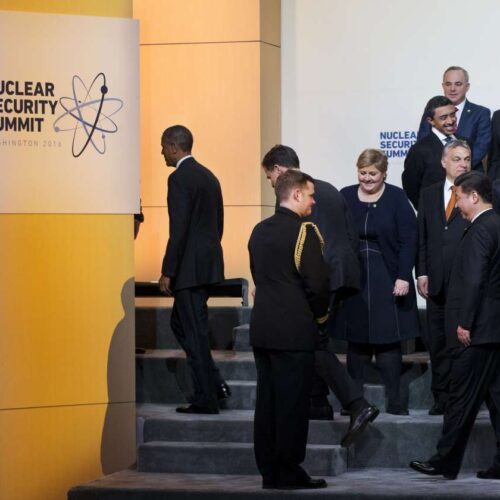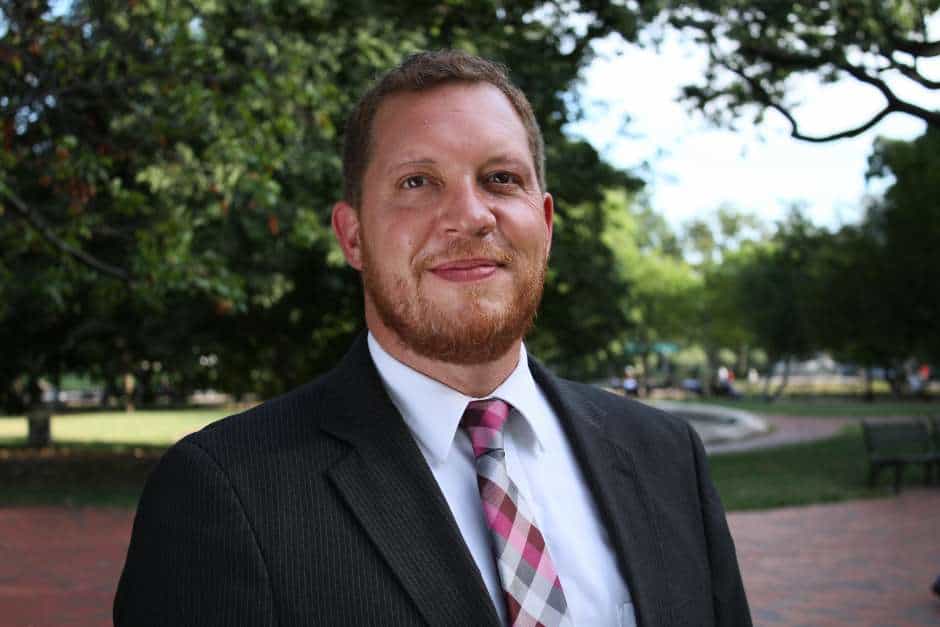Introduction
The Obama administration won praise for promising in 2012 to curtail the use of bomb-grade uranium in the production of medical diagnostic tools. But now the U.S. Energy Department is getting brickbats for proposing to send such materials to several European nations, including Belgium, where a shaky nuclear program has in recent years been plagued by sabotage, radicalization and terrorist surveillance.
It’s not the first time that the administration has been accused of failing to fulfill one of its nuclear weapons-related commitments. In this case, in 2012, the United States, Belgium, France and the Netherlands declared at a summit meeting in South Korea that they would begin phasing out the use of highly-enriched uranium (HEU) for making medical isotopes, with the understanding that by a 2015 deadline, the material would be replaced with less concentrated uranium that could not be used by terrorists to construct a nuclear weapon.
That proposed phase-out didn’t occur. In fact, a Center for Public Integrity analysis of Nuclear Regulatory Commission export licensing records shows that since making the 2012 promise, the United States government has quietly sold foreign countries 81.7 kg of highly-enriched uranium for use in making medical isotopes – more than enough to build three new nuclear bombs.
This latest request — which was open for public comment until Sept. 14 — has drawn particular objections from nuclear nonproliferation experts. In a letter sent this month to Energy Secretary Ernest Moniz, former officials from each of the past six presidential administrations said they objected to a National Nuclear Security Administration request that the Nuclear Regulatory Commission authorize the sale and shipment of 7.2 kg of highly-enriched uranium – almost 16 pounds, or more than one-fourth of what’s typically considered needed to build a nuclear bomb.
The experts complained that the HEU was going to porously-guarded civilian reactors, in a shipment that will undermine the broader objective of reducing access to highly-enriched uranium throughout Europe. The shipment would wrongly “continue business as usual,” their letter complained.
“This is a violation of a commitment by not just any country, but the country that convened and initiated the whole Nuclear Security Summit process,” said Alan Kuperman, a University of Texas public policy professor who closely monitors efforts to draw down the world’s supply of bomb-grade uranium. “It really risks calling into question whether other countries will feel compelled or committed to abide by their pledges.”
A final NRC decision may be weeks away, because before the NRC approves export requests, its commissioners seek presidential guidance. The White House press office did not respond to requests for comment.
Medical uses
Radioisotopes are byproducts of irradiated uranium that can be injected or used externally to produce imaging that can detect cancer and heart disease and enable bone and organ scans. The most commonly used isotopes for medical diagnoses are molybdenum-99 and technetium-99m.
Health institutions in the U.S. buy about half of the world’s medical isotopes annually. The 2012 commitment to stop using HEU in their production emerged from a Nuclear Security Summit that year, one of four that grew out of President Obama’s 2009 speech in Prague calling for movement towards a world free of nuclear weapons. In that speech, which helped him win a Nobel Prize, Obama called nuclear terrorism “the most immediate and extreme threat to global security.”
The United States agreed at the summit to continue supplying highly-enriched uranium to its partner nations during the search for an alternative. But that work has been impeded by technical challenges, regulatory hurdles in Europe, and economic forces that have left isotope producers reluctant to fully embrace the transition. Among the largest conversion obstacles, according to a new report released by The National Academies of Sciences, Engineering and Medicine, is “the continued availability” of highly-enriched uranium from America.
It’s more expensive to produce isotopes using low-enriched uranium, the report explained, and producers often aren’t willing to pass along those costs to their customers when a few outliers refuse to make the transition and keep selling lower-cost radioistopes.The report said that scientists on the panel recommended “that the U.S. government and others take additional actions to promote the wider utilization of Mo-99/Tc-99m produced without the use of HEU targets.”
The NNSA’s latest export request, submitted to the NRC in July, would provide 7.2 kg of highly-enriched uranium — a year’s supply — to the Institute for Radioelements in Belgium for conversion to medical isotopes. The Institute plans to have the material irradiated in France and the Netherlands, and then extract molybdenum-99 and other useful isotopes at Belgian Reactor 2 at the Belgian Nuclear Research Centre in Mol, an hour’s drive north of Brussels.
For many nonproliferation and security experts, that’s a troubling prospect. In November 2015, Belgian police investigating the terrorist siege that month in Paris discovered secret video of a senior nuclear researcher at the Mol plant that had been recorded by two brothers with ties to the Islamic State; the pair later carried out suicide bombings in Brussels this spring. That’s just the latest in a string of worries at Belgian nuclear sites. Since 2014, a Belgian reactor was damaged and shut down for months by sabotage and an inspector with broad access inside a nuclear plant was killed in Syria fighting alongside ISIS.
Because of the mounting worry about Belgium’s nuclear sites, the government for the first time deployed armed military guards to protect them. Before that, unarmed contractors were responsible for guarding the plants. But the armed guard deployment is temporary, and will be withdrawn when the government has established a suitable response force that can react to emergencies – including terrorist attacks – at nuclear facilities, Nele Scheerlinck, spokeswoman for the Federal Agency for Nuclear Control, the NRC’s counterpart in Belgium, wrote in an email.
The Obama administration has acknowledged that it has gathered intelligence suggesting terrorists want to acquire nuclear materials, and smuggling attempts foiled in Europe demonstrate there’s a black-market for bomb-grade ingredients.
Loopholes in the promise
Nevertheless, the NNSA defended its plans to sell more highly-enriched uranium to Belgium.
In an email, NNSA spokeswoman Francie Israeli noted that a joint statement issued at the 2016 Nuclear Security Summit by the nations that were party to the 2012 commitment leaves the door open for continued exports of bomb-grade material from the U.S. to European countries. While renewing the initial committment, it said it should be pursued “where technically and economically feasible.” It also asserted that “in some facilities, HEU is still indispensable during the transition period to conduct peaceful scientific research or to produce medical radioisotopes used for radiopharmaceutical products.”
Israeli said that all of the countries behind the 2012 pledge “remain fully committed to meeting their Summit commitment” of a wholesale switch from highly-enriched uranium “as soon as possible.” The State Department’s Bureau of International Security and Nonproliferation also supports the NNSA’s export application, the bureau’s spokeswoman Margaret MacLeod said in a telephone interview.
The NRC isn’t legally bound by the 2012 Nuclear Security Summit commitment, but it cannot ignore a federal law passed in 2012 that requires the Energy Department to demonstrate it is making progress on the conversion to low-enriched uranium. “They don’t seem to be doing that as fast as they can,” said Miles Pomper, a senior fellow at the Middlebury Institute of International Studies at Monterey’s James Martin Center for Nonproliferation Studies.
The NNSA has considerable leverage in the process, which critics say it has failed to use. It pays private sector firms and some of the same contractors that develop its nuclear weapons to improve the underlying technology for using low-enriched uranium technology in medical applications. But it also brokers deals for its contractors to sell the bomb-grade materials abroad.
Analysts say that because the U.S. use of radioisotopes is declining, the current supply is adequate. But they also forecast a shortage after a Canadian reactor shuts down in October. “I do think [NNSA] has a strong obligation to avoid any more [medical isotope] shortages, and this may influence it to give countries like Belgium the benefit of the doubt and not play hardball,” Edwin Lyman, a senior scientist with the Union of Concerned Scientists’ Global Security Program, wrote in an email. “But in the past, highly-enriched uranium-based suppliers have taken advantage of their near-total control over the market to drag their feet on conversion.”
Kuperman said that “the U.S. … has all the leverage, because we provide the highly-enriched uranium. The U.S. should use that leverage to compel Europe to convert to low-enriched uranium as soon as possible. That’s how the 2012 agreement came to be. Current DOE officials apparently have forgotten ‘The Art of the Deal.’ They’re acting like lobbyists for the Europeans, instead of phasing out highly-enriched uranium exports as quickly as possible.”
“It just may be,” he said, “that this Nuclear Security Summit process was a mirage that just might vanish.”
This article was co-published with NBC News.
Read more in National Security
National Security
Military trainees at defense universities later committed serious human rights abuses
Foreign officers who attended top Pentagon schools were later accused of rape, murder, genocide, and coups, according to State Department reports
National Security
A trail of contracting fiascos
How a company using a rented mailbox in Chicago got millions of dollars from international agencies and the U.S. government, despite official allegations of lying and repeated sanctions


Join the conversation
Show Comments